Do rock climbing shoes need to be uncomfortable? Our expert guide
Do rock climbing shoes need to be uncomfortable and just how tight should they be exactly? We answer this and more…
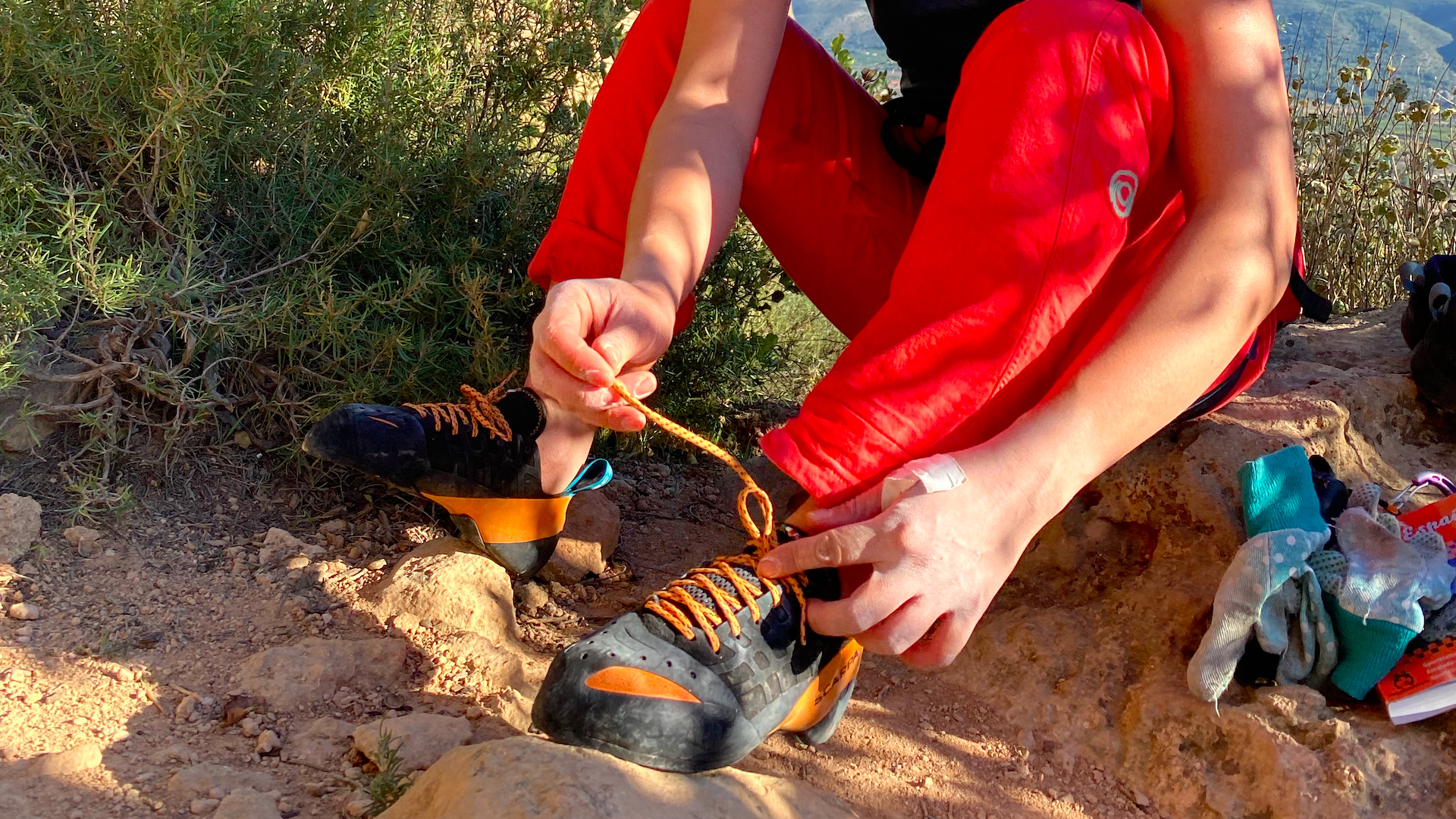
Do rock climbing shoes need to be uncomfortable? We’re not going to lie, in the world of rock climbing there can be a bit of a balance between performance and comfort. A certain level of discomfort can be expected at times. How much really depends on the choices you make as a climber. But, we’d argue that climbing shoes don’t necessarily need to be uncomfortable.
Admittedly, it’s rare you hear climbing shoes described as comfortable. If they are, its often with the word relatively before it. Relatively can cover all manner of sins. There are reasons that mountain professionals wear approach shoes when guiding clients on “easier” rock climbs. Firstly, the climbs will be well within their comfort zone (they probably wouldn’t guide on them otherwise), they don’t have to faff with changing footwear at the bottom of the crag and, basically, approach shoes are a hell of a lot more comfortable than climbing shoes.
So, climbing shoes are a world away from popping on a cozy pair of slippers and they’re still behind the likes of hiking boots in the comfort stakes. But, do they need to be uncomfortable? Sure, you’re not going to take on a thru hike in a pair but surely they should be moderately pleasant to wear when, y’know, actually climbing in them?
Meet the expert

Alex is a qualified Mountain Leader and a member of the London Mountaineering Club’s committee. He came into all things climbing when his scrambling exploits hit a ceiling and he began eying up more technical climbing routes with his club mates. He's climbed all over the UK, from the gritstone of the Peak District to the limestone of the Wye Valley, as well as taking on multi-pitch routes in the Alps.
What is a climbing shoe?
- Climbing shoes feature flat rubber soles for excellent grip on rock
- They're designed to be tight-fitting and conform to the shape of the foot
- They are not comfortable to walk in

A climbing shoe is a piece of footwear designed specifically for rock climbing or indoor climbing. Designed to fit tight and conform to the shape of the foot, they feature a flat, sticky rubber outsole and protective rands at the toes and heel. These enable climbers to stand on tiny ledges and holds, providing precision and sensitivity way beyond other forms of footwear.
Unlike running shoes, approach shoes, or hiking shoes, climbing shoes are not comfortable to walk in, nor are they meant to be.
Women’s climbing shoes often have a softer structure, which makes them more flexible when under less weight, as female climbers are generally lighter than male climbers.
How tight should climbing shoes be?
- Climbing shoes should fit tight, with no dead space between the shoe and the foot
- There should be a slight curl at the toes
- They should still feel relatively comfortable and not be so tight as to cause pain
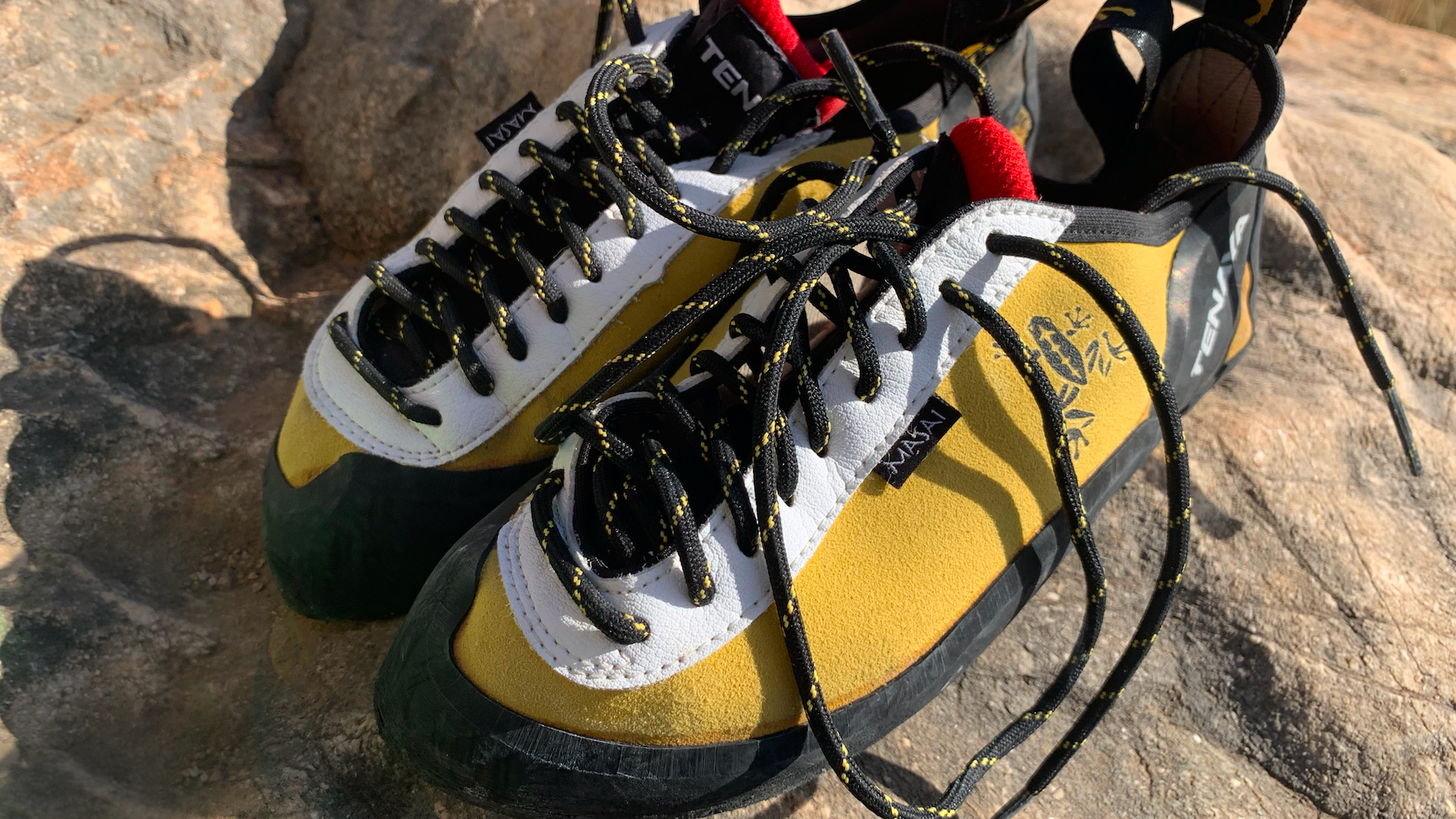
How should climbing shoes fit? There’s no one size fits all answer to this question, as there are myriad factors at play, including the kind of terrain you’ll be taking on, the difficulty of your intended climbing goals and the style of climbing shoe (more on this later). Fundamentally, they should fit your feet tightly, with no dead space between shoe and the foot and a slight curl at the toes, yet not be so tight that your foot feels crammed in.
All the latest inspiration, tips and guides to help you plan your next Advnture!
There’s a myth that has been circulating for decades that climbing shoes should be so tight as to be positively painful. Legendary American climber Alex Lowe famously said: “The best climber is the one having the most fun.” If your feet are in agony, you’ll be having the least fun and, by extension, you’ll be the worst climber.
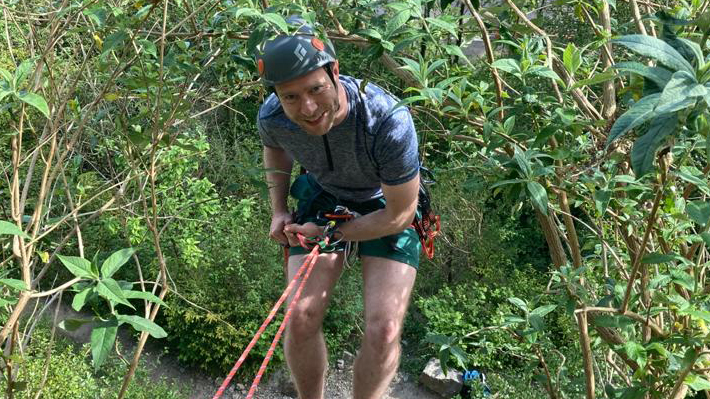
- La Sportiva recommend buying a shoe around 2 sizes smaller than your usual footwear
- It's important to try different sizes on to get the right fit for you
- Bear in mind that climbing shoes expand a little with use
I remember buying my first pair from a little shop attached to the climbing gym by the canal at Mile End, in East London. I’d come to climbing as a hiker and I’d long been hiring shoes to use on the bouldering walls. However, I had my eyes on outdoor climbing and it was time to get myself a pair.
“Think you can go tighter?” asked the helpful shop advisor every time I appraised the ever-shrinking test pair of the La Sportiva Mythos shoes he'd helped me to chose. “The tighter the better.”
For my hiking shoes and trail running shoes, I’m a UK size 8 (US 9). The pair of La Sportivas I ended up investing in were a UK size 6 (US 7). Subsequently, I did a bit of research and found that La Sportiva (the very same!) recommends that “to optimize performance and ensure a stronger grip, more experienced climbers suggest buying a climbing shoe that is 2 sizes smaller than the size used for other types of footwear.” So, it seems my little session of trial and error at the climbing shop was in sync with professional advice. However, I wouldn’t have blindly gone in and asked for a size 6 pair off this advice alone. I arrived at my eventual pair by trying them on until both my advisor and I were happy with them.
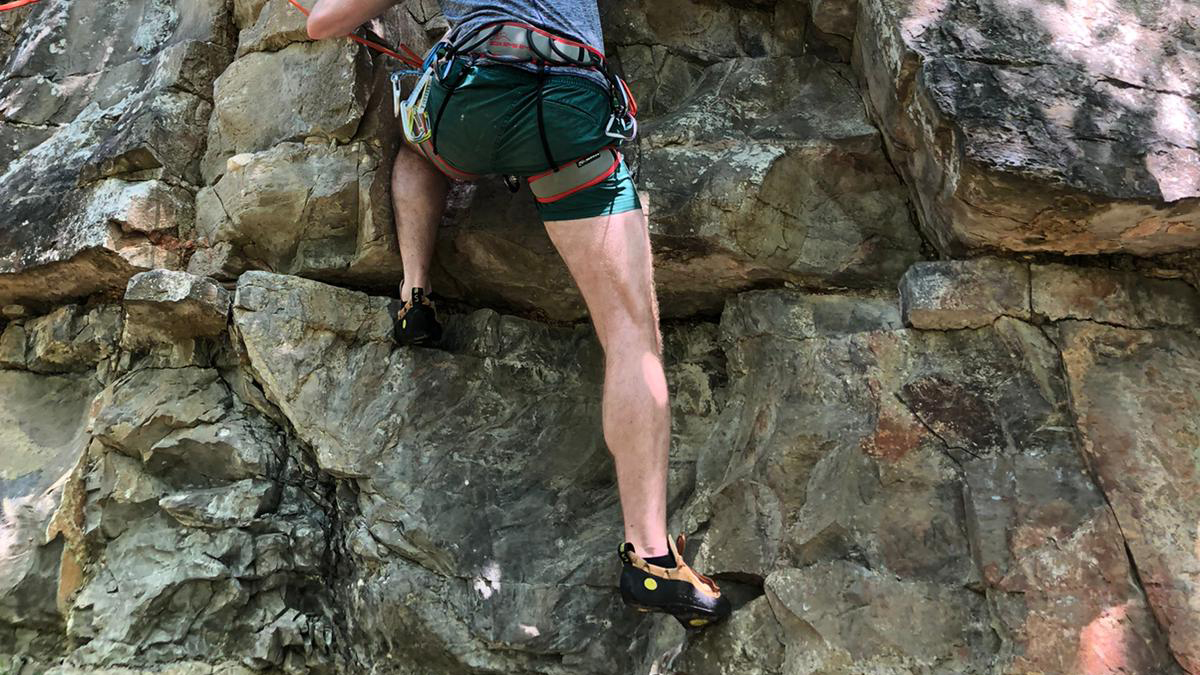
I’ve got on well with that first pair and, while they took a little while to break in, they were soon comfortable enough for me to thoroughly enjoy my days at the crags. By common consent, the Mythos is one of the most comfortable climbing shoes out there. Another thing to note is, climbing shoes tend to expand a little with use, particularly leather ones. So, just as climbing is the best way to train for climbing, climbing is also the best thing for breaking in your tight-fitting shoes.
How important the shape of the last?

A shoe’s last is the 3D, foot-shaped mold that forms the basis of its design. Every footwear manufacturer has their own last designs and the same last can be used in many shoes across a range.
Broadly speaking, there are three types of climbing shoes, with each variety built upon the foundation of the last’s shape.
Neutral: These have a flat profile, a thick, stiff sole and look most like a normal pair of shoes. This makes them well-suited to newbies, as they allow the foot to assume a fairly natural position, thus making them the most comfortable option. Don’t be mistaken into thinking they’re only for beginners though – many veterans of the crags prefer them too, particularly for longer, multi-pitch adventures. We like the women’s Five Ten NIAD Lace, which should be relatively comfortable to wear all day long.

Moderate: Less comfortable than neutral shoes, moderate climbing shoes have a downturned profile, meaning they curl down at the toes, which makes them suited to more difficult, technical climbing. Good all-rounders, they give the climber greater security on the crag than a neutral pair. The Tenaya Ra LV are among our favorite moderate women’s climbing shoes.

Aggressive: The highest performing but least comfortable option is an aggressive pair, which feature a significantly downturned profile, like the beak of a raptor. They provide sensitivity for challenging overhanging routes and difficult bouldering. We particularly like the Scarpa Instinct Lace, an excellent pair of aggressive climbing shoes. As mentioned, aggressive climbing shoes aren’t exactly comfortable for long periods and few would climb multi-pitch routes in them. They’re also not great for crack climbers, due to the pressure points created when you jam your foot into said cracks.
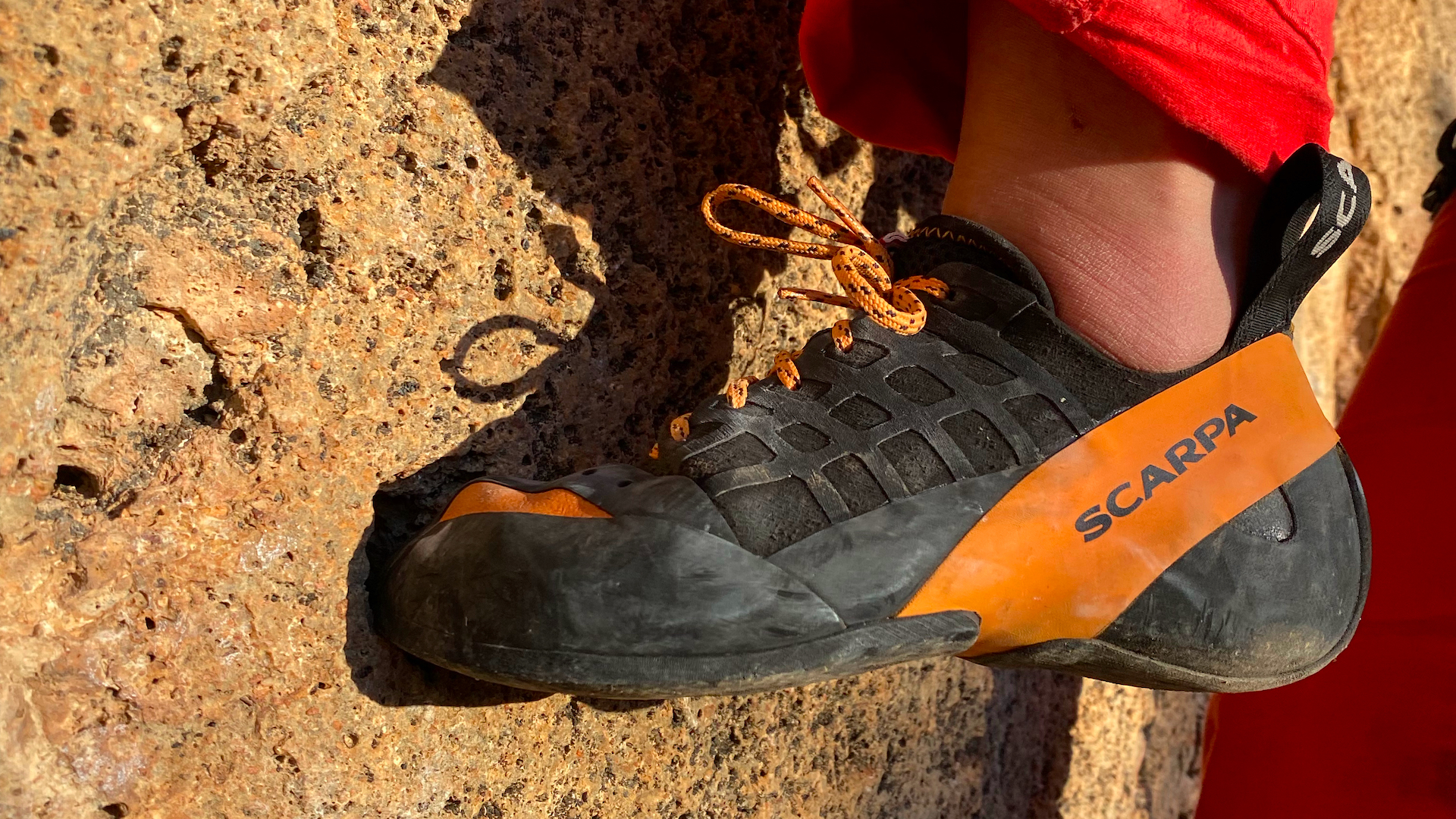
So, generally speaking, the more aggressive your climbing shoes are, the less comfortable they’ll be. If you’re all about epic multi-pitch climbs and you expect to be in your climbing shoes for the duration, a more neutral pair is advised. For shorter, snappier, more technical routes, bring the aggro!
Are some climbing shoes better for indoor walls?
- Neutral shoes are arguably better for long sessions indoors

The good news is that there are no climbing shoes out there that you can’t wear both indoors and out. However, if you’re having a long day at the indoor wall, you’d ideally want a relaxed pair that you’ll be comfortable in for hours on end. With this in mind, neutral shoes are preferable, which is one of the reasons why the shoes your climbing gym rent out are typically of this kind of design.
Another consideration is the amount of protection a shoe gives. Natural rock surfaces are generally much more abrasive than those found on an artificial wall, so a stiffer climbing shoe is a good shout for long routes outdoors.
The verdict
- Climbing shoes shouldn't be overly uncomfortable
- Get the right fit and style for the objectives you intend to take on
- Technical objectives in aggressive shoes will lead to greater discomfort

No, rock climbing shoes do not need to be uncomfortable. The nature of the beast is that they’re never going to be the coziest pair of footwear you own, but that doesn’t mean they need to be awfully uncomfortable either. If you ensure you get the right fit and the right style of climbing shoe for your personal goals, plus you look after your feet and swap your shoes out every now and again, climbing shouldn’t be an uncomfortable experience overall.
However, a little bit of discomfort is to be expected at times, particularly if you’re taking on really technical objectives wearing aggressive shoes. Climbers at this level do sacrifice some degree of comfort for performance and it’s not like they’re going to wear their shoes continuously for several hours. The bottom line is you should never be left in pain. If this is the case, you’ve either got the wrong shoes or you’re pushing too hard.
Alex is a freelance adventure writer and mountain leader with an insatiable passion for the mountains. A Cumbrian born and bred, his native English Lake District has a special place in his heart, though he is at least equally happy in North Wales, the Scottish Highlands or the European Alps. Through his hiking, mountaineering, climbing and trail running adventures, Alex aims to inspire others to get outdoors. He's the former President of the London Mountaineering Club, is training to become a winter mountain leader, looking to finally finish bagging all the Wainwright fells of the Lake District and is always keen to head to the 4,000-meter peaks of the Alps. www.alexfoxfield.com

